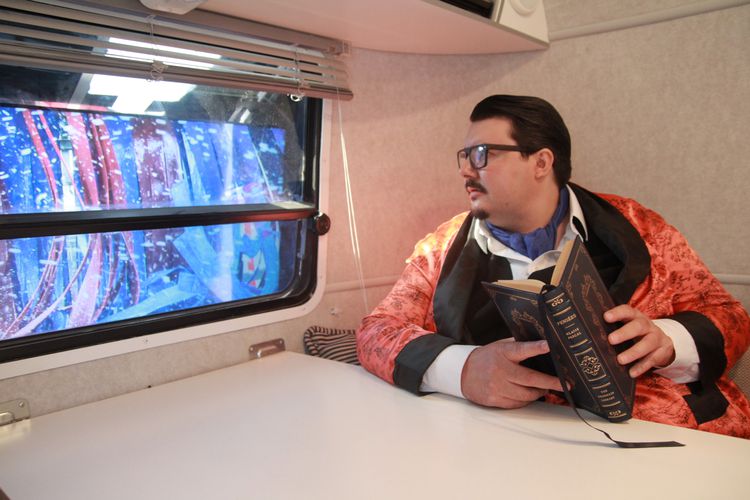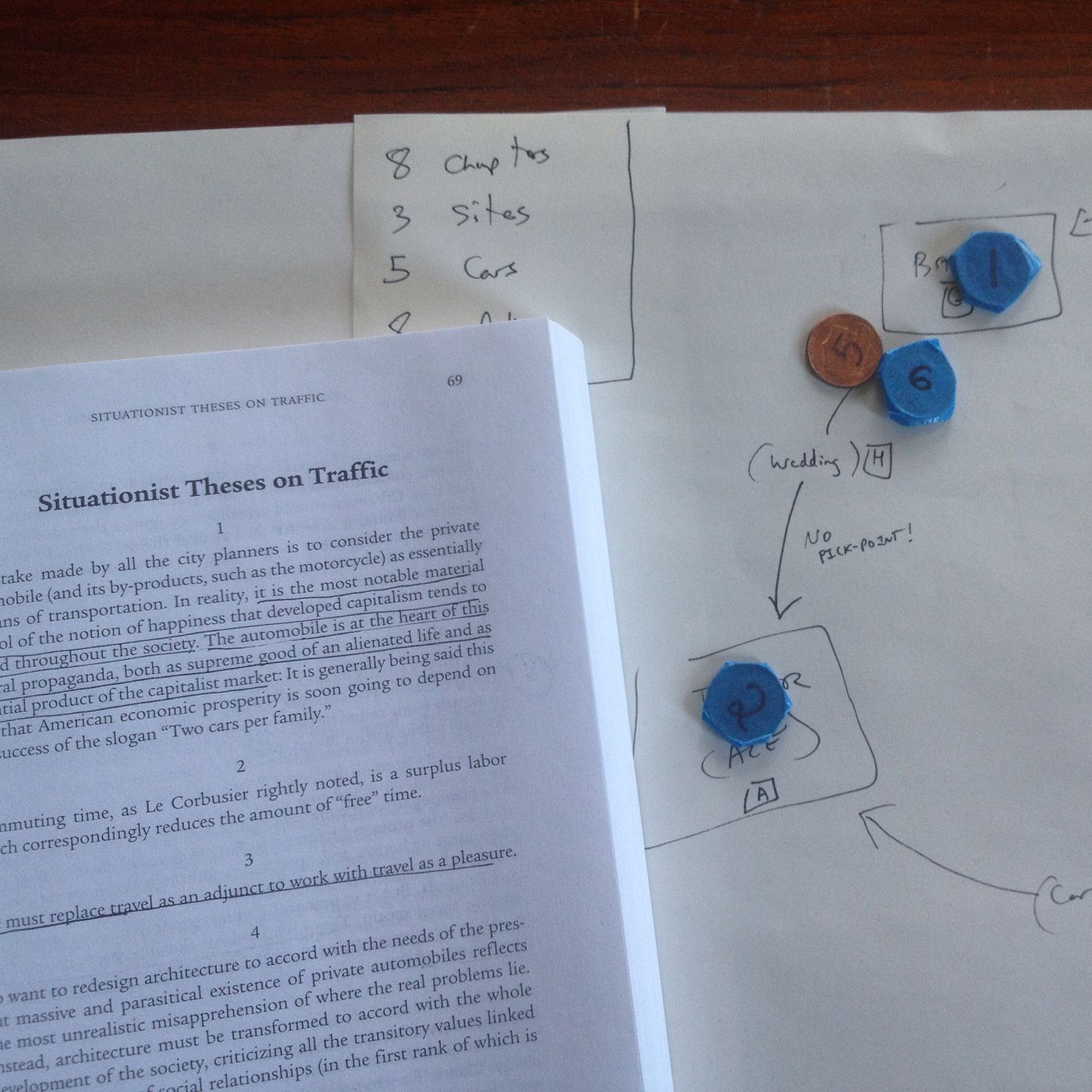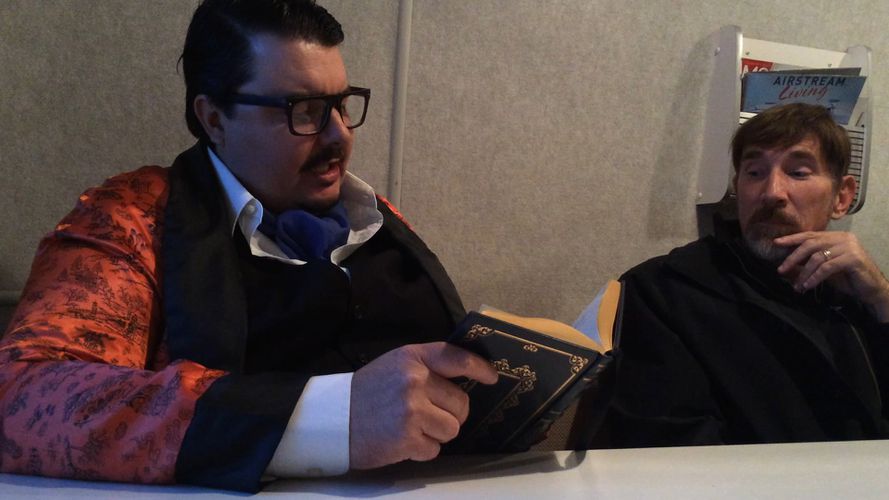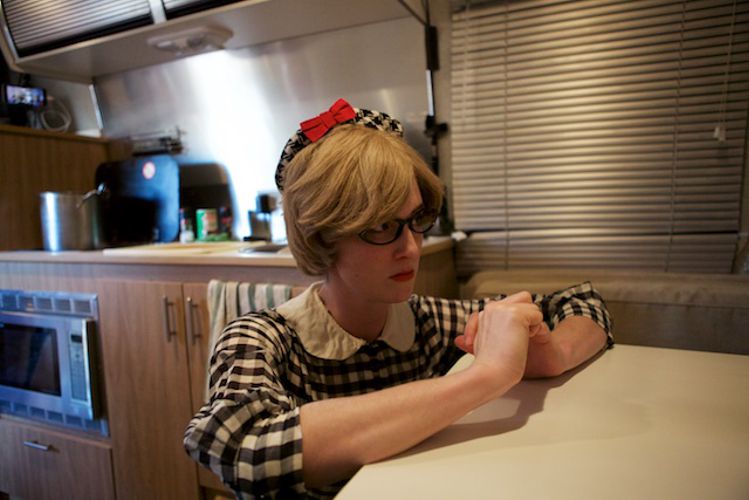-
Chapter 2 CrashRed Route - An intersection in Boyle Heights
Lucha and Jamson exchange information in the aftermath of their accident.
-
Chapter 4 Lucha's Quinceañera SongRed Route - Mariachi Plaza, Boyle Heights
Lucha remembers the day she left her childhood behind.
-
Chapter 6 Jameson PortraitYellow Route - The 2nd Street Tunnel, Downtown Los Angeles
Jameson contemplates the multifaceted nature of his personality.
-
Chapter 7 The ReunionYellow Route - A Rehearsal Studio in the Arts District
Lucha and Jameson connect at Lucha's performance of Orpheus and Eurydice.
-
Chapter 8 First KissRed Route - Hollenbeck Park, East Los Angeles
Romance blooms on Lucha and Jameson's first date.
-
Chapter 9 Angel's PointGreen Route - Angel's Point, Elysian Park
Lucha and Jameson share a passionate physical experience.
-
Chapter 11 The Floating NebulaGreen Route - The Corn Fields, Los Angeles State Historic Park, Chinatown
The metaphysical peak in Lucha and Jameson's love.
-
Chapter 12 WeddingYellow Route - City Hall, Downtown Los Angeles
On their wedding day, Lucha gives Jameson a fateful gift.
-
Chapter 14 The Phone Call, Part 1Red Route - Traversing between the Arts District and Boyle Heights
Lucha receives a mysterious phone call from a voice she seems to recognize.
-
Chapter 17 Orlando's FairwellRed Route - Evergreen Cemetery
Before leaving Los Angeles, Orlando pays his last respects to his wife.
-
Chapter 18 Interlude (Car Wash)Green Route - AirStream Trailer, Elysian Park
Reflect on the impact of a location's geography on a person's psyche.
-
Chapter 24 The Red NotebookRed Route - Utter darkness
In a state of darkness, Lucha is haunted by Jameson's red notebook.
-
Chapter 25 The Other WomanYellow Route - The Bradbury Building, Downtown Los Angeles
Still submerged in darkness, Lucha dreams of Jameson's infidelity.
-
Chapter 26 HadesGreen Route - Bowtie Parcel, Los Angeles River
Lucha descends to the underworld in search of Jameson.
-
Chapter 28 Lucha and Orlando in LoveYellow Route - Historic Core, Downtown Los Angeles
After years apart, Lucha and Orlando reunite in Los Angeles.
-
Chapter 33 Farewell From the Roof TopsRed Route - Rooftops, Toy Factory Lofts, Biscuit Lofts, Ito Building Tower, Arts District
Lucha makes peace with Jameson's disappearance.

Interlude (Car Wash)
Father: Bobby Gutierrez
Tuba: Brandon Davis
Bass: Ben Finley
Music by Veronika Krausas
Text by Guy Debord
Electronic soundtrack by Adam Borecki
This scene is based on the idea of a rite of passage, and that passage between secular or sacred spheres requires a ceremony or ritual. He also uses the metaphor for a passage as when a person changes rooms in a house. Rites of passage have three phases: separation, liminality (transition), and incorporation.
Texts are taken from Guy Debord’s On The Passage of a Few Persons Through a Rather Brief Period of Time (1959) and loosely based on the three stages of a rite of passage. The texts are read by the narrator in English while echoes of the original French text are sung.
–Veronika Krausas
Director’s Notes:
“Chapter 18 is an interlude: the halfway point in the story, a kind of intermission. In Elysian Park, we enter an AirStream, and it seems as if we have gone back into time.
“A tuba, bass, and electronic soundscape filled out the creepy and mysterious atmosphere. The text came from the script for Debord’s film On the Passage of a Few People Through a Rather Brief Unity of Time – which I considered an unofficial subtitle for Hopscotch as a whole.
“The window indicates we are moving through a car wash. But the characters dress and behave like figures from the 1950s. We see a tense marital scene, the father anachronistically reading text by Guy Debord, and the mother, ominously chopping vegetables for a stew that will never be eaten, singing those lines by Debord.

“This scene had a pretty tortuous evolution into becoming the strange scene experienced in the performance. Veronika wanted to write the interlude as a musical car wash, an idea I loved. But easier said than done: an operational car wash would never give up all their business on weekends for the same car to pass through it again and again. I thought I found a solution when I passed a defunct car wash on 7th Street downtown…only to discover that the owner was currently in jail for using that location for a money laundering scheme. Veronika thought we should make it a virtual reality car wash, which was intriguing but way beyond our budget. But the idea of the virtual car wash stuck when we decided to fill the windows with the video of moving through a car wash.
“Based on the way the Green Route was shaping up geographically, we needed a stationary chapter in Elysian Park to connect Chapter 9 and Chapter 35. That’s where the idea of a parked camper came up. Suddenly the piece took on a domestic quality: it started to become about the roads as a home, how mobile living contributed to the dissolution of the traditional family unit. It became a kind of twisted genesis story for a new society born out of car culture. AirStreams exude that frontier spirit and optimism of California in the 1950s, a history still embedded in the landscapes we visited in Hopscotch. In this context, Guy Debord’s text speaks prophetically of the revolution of the 1960s.
“Debord was one of the chief inspirations of Hopscotch. In 1958, he developed a concept he called the dérive, or “drift,” a technique of a quick passage through varied surroundings to study the urban environment and contemplate how it effects us psychologically. He coined the term “psychogeography”, which he defined as “the study of specific effects of the geographical environment, consciously organized or not on the emotions and behaviors of individuals.” The derive was meant to expose how “cities have psychogeographical contours, with constant currents, fixed points and vortexes that strongly discourage entry into or exit from certain zones.” In many ways, I aspired for Hopscotch to be a 21st century derive for the city of Los Angeles.”
– Yuval Sharon



